25 must-see masterpieces of the Tretyakov Gallery
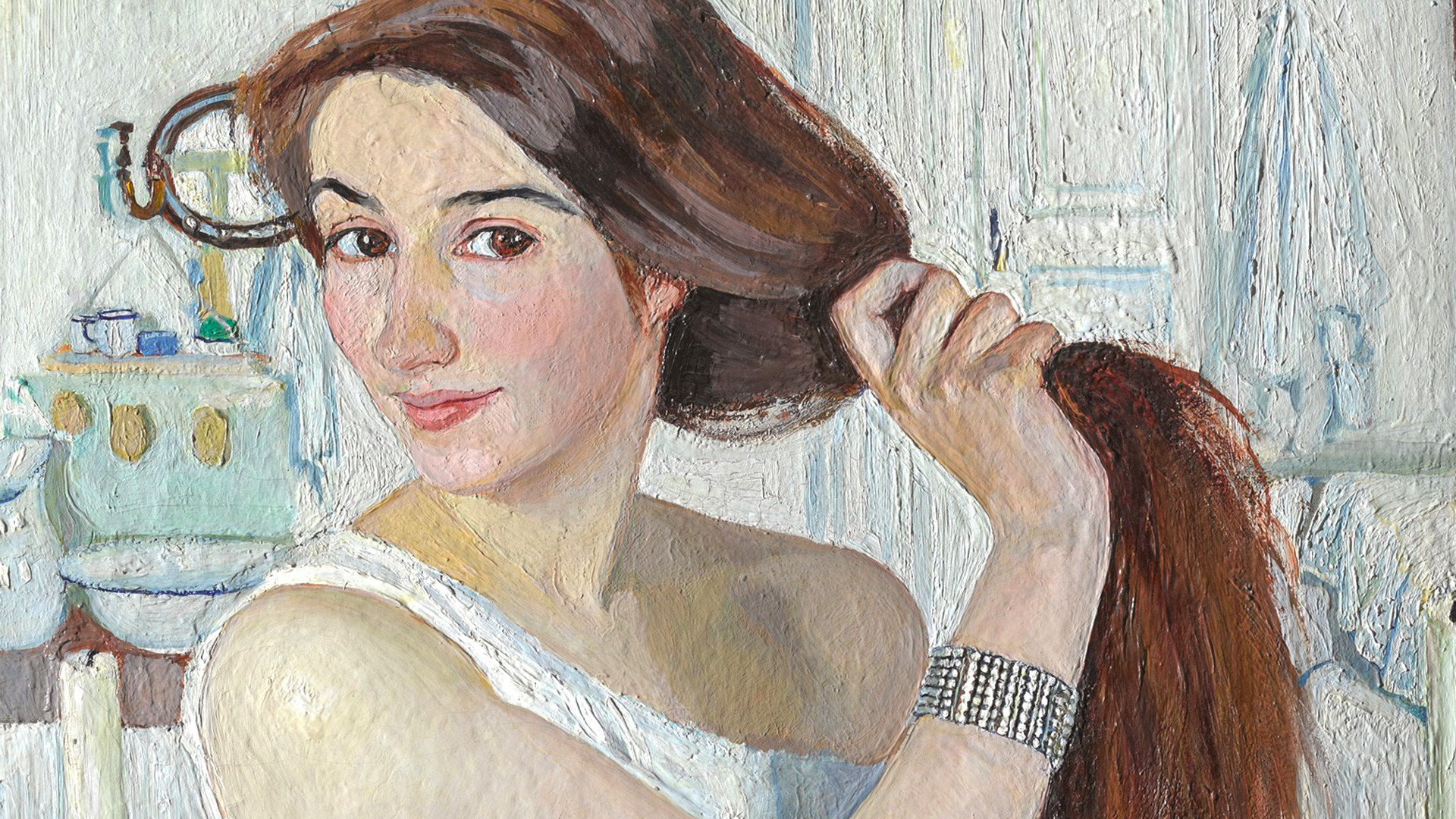
It was the dream of the gallery's creator, Pavel Tretyakov, to create a major public museum of Russian art, in contrast to the nobles before him who had collected mainly Western European paintings and sculptures. This successful merchant made Russian artists fashionable and zealously bought up their paintings. In the end, he achieved more than his dream, even adding four wings to his mansion in central Moscow.
In the 1980s, a new building was built specially for 20th-century Russian art, called the New Tretyakov Gallery.
Today, the museum’s collection contains more than 190,000 works. Let's take a look at the most important.
1. Unknown author. Mandylion (Holy Face). Adoration of the Cross. Late 12th - early 13th century
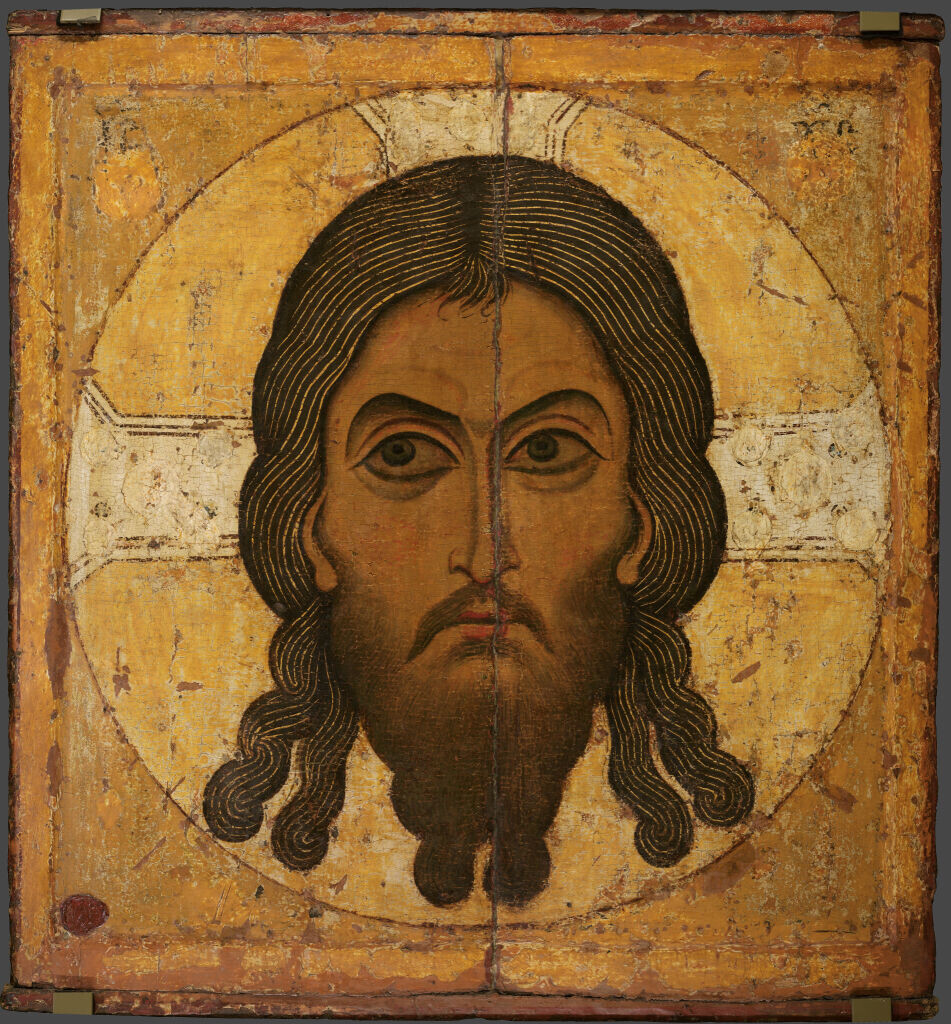
Several rooms of the Tretyakov Gallery are dedicated to old Russian religious art. There were more than 60 icons in Pavel Tretyakov's collection, while others were added after the 1917 Bolshevik Revolution. They were either taken from churches or nationalized from noble private collections. In 1930, this image of the Holy Face came from the Historical Museum. This double-sided icon was originally from the Assumption Cathedral of the Moscow Kremlin, where it was most likely brought from Novgorod in the mid-16th century.
2. Karl Bryullov. The Rider, 1832
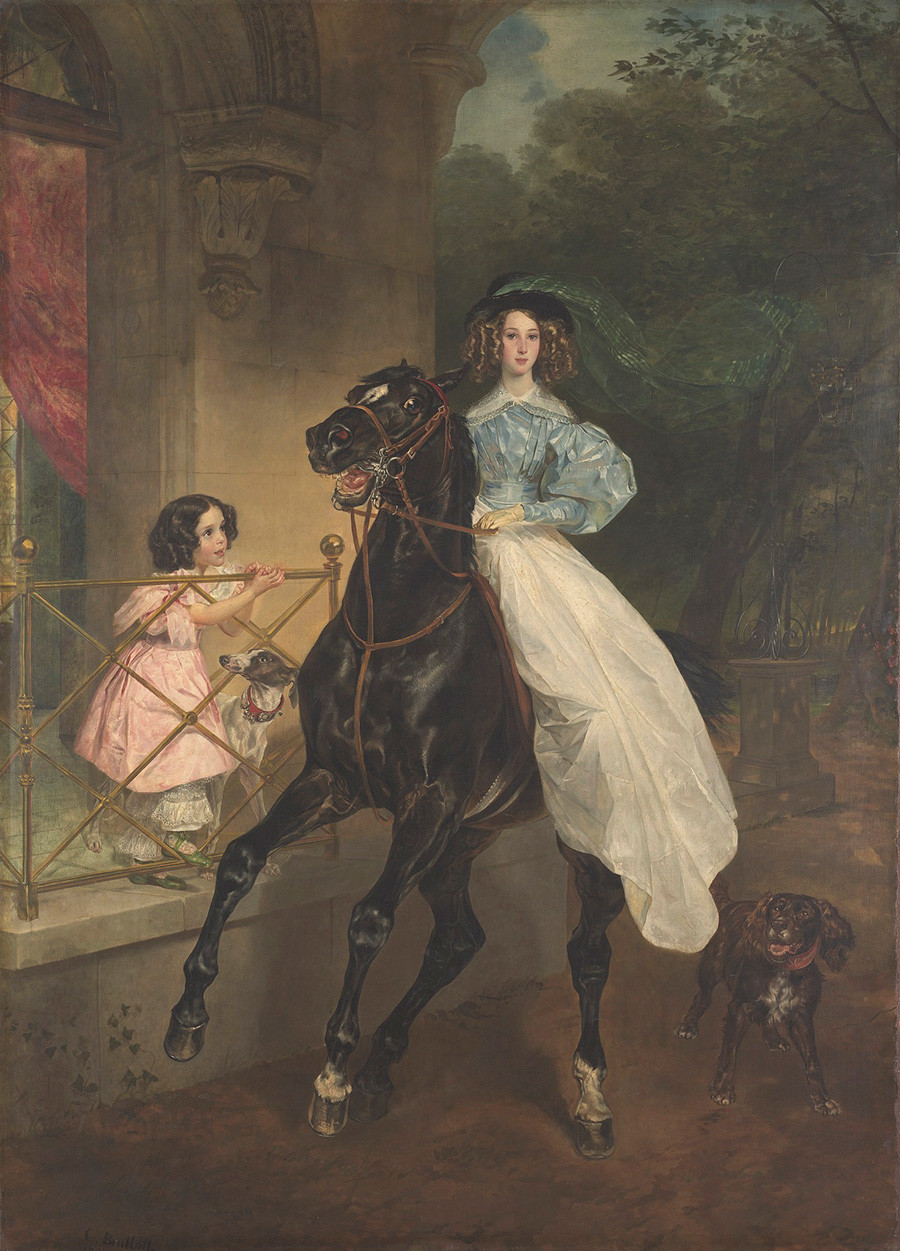
Bryullov spent many years in Italy, where he painted this picture in Milan by order of Countess Yulia Samoilova. Contemporaries admired the skill and grace of the equestrian portrait. Pavel Tretyakov purchased the painting during an auction sell-off of Samoilova's property.
3. Alexander Ivanov. The Appearance of Christ Before the People, 1837-57
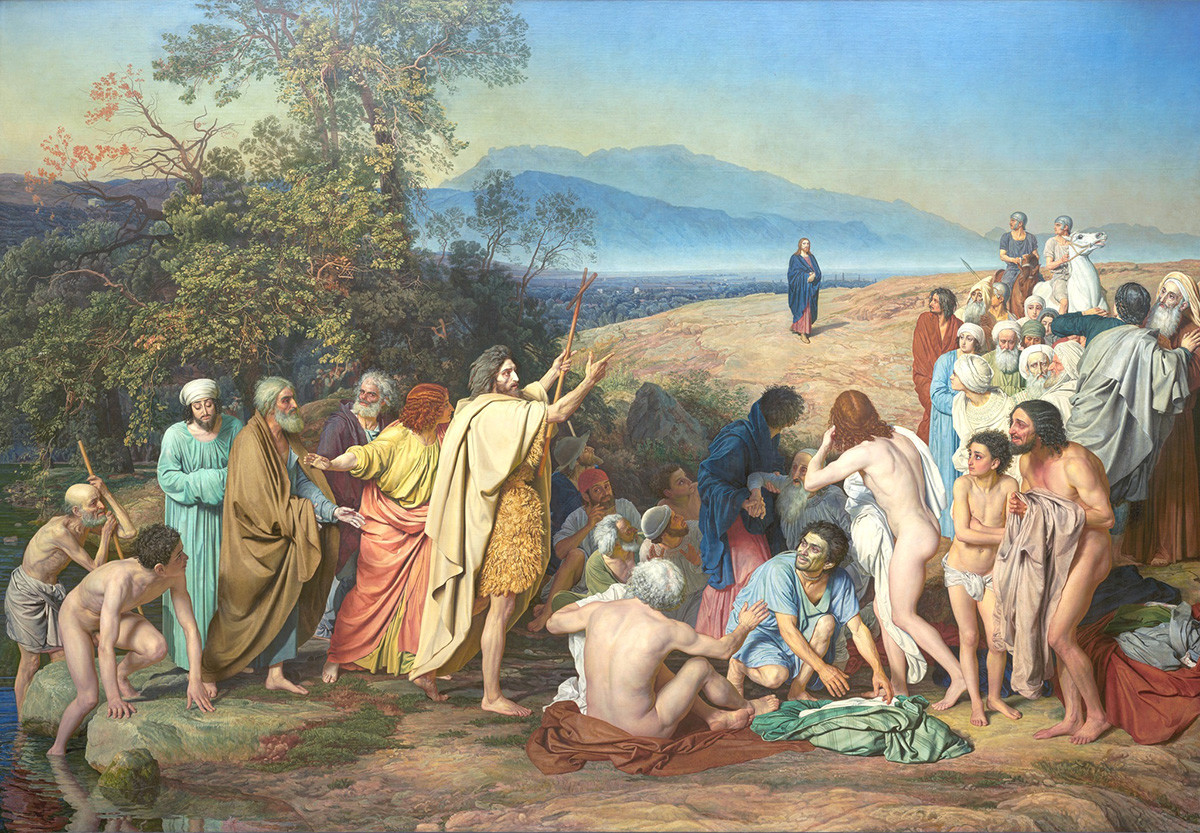
Ivanov's painting was bought by Emperor Alexander II and donated to the Rumyantsev Museum, from where it made its way to the Tretyakov Gallery in 1924. To accommodate the 5.4 x 7.5-meter canvas, a separate hall was specially built in the gallery.
4. Pavel Fedotov. The Aristocrat’s Breakfast, 1849-50
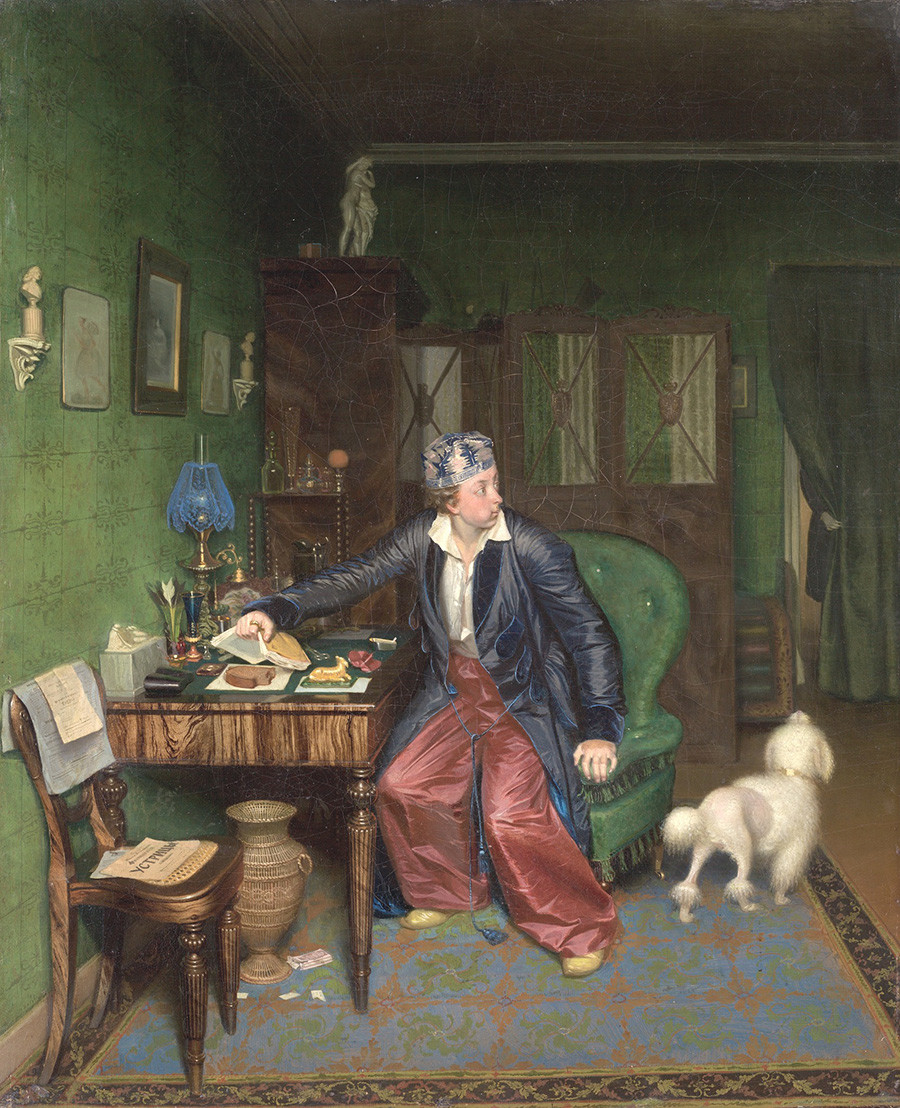
Fedotov is a true master of genre painting. Each canvas of his offers up endless details, almost like in the small and highly finished works of the Dutch Golden Age.
5. Konstantin Flavitsky. Princess Tarakanova, 1864
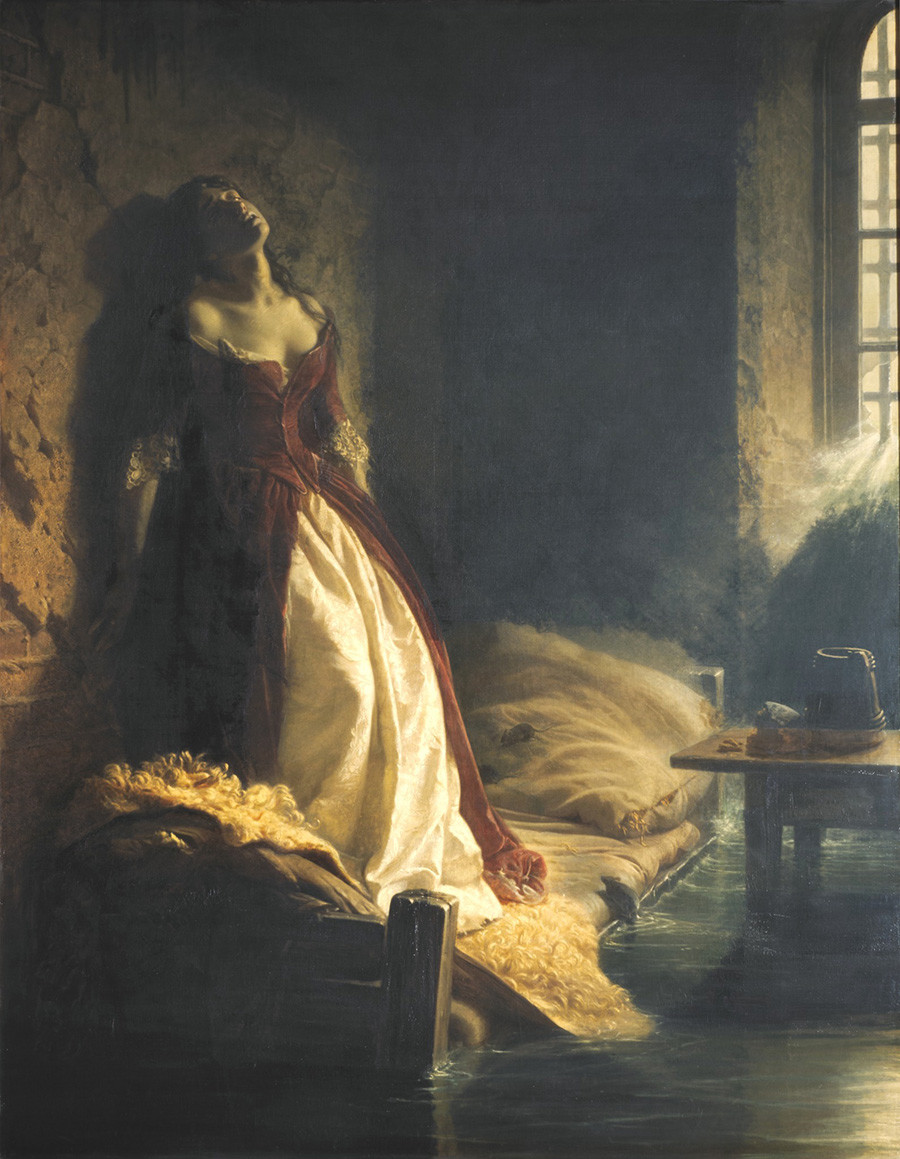
One of the first works that Tretyakov bought for his gallery. It depicts the historical subject of Princess Tarakanova, who claimed to be the daughter of Empress Elizabeth and was imprisoned in the Peter and Paul Fortress, where, according to legend, she died during a flood. We see the rising water, rats and anguish on the face of the prisoner.
6. Vasily Perov. Troika. Apprentice Workmen Carrying Water, 1866
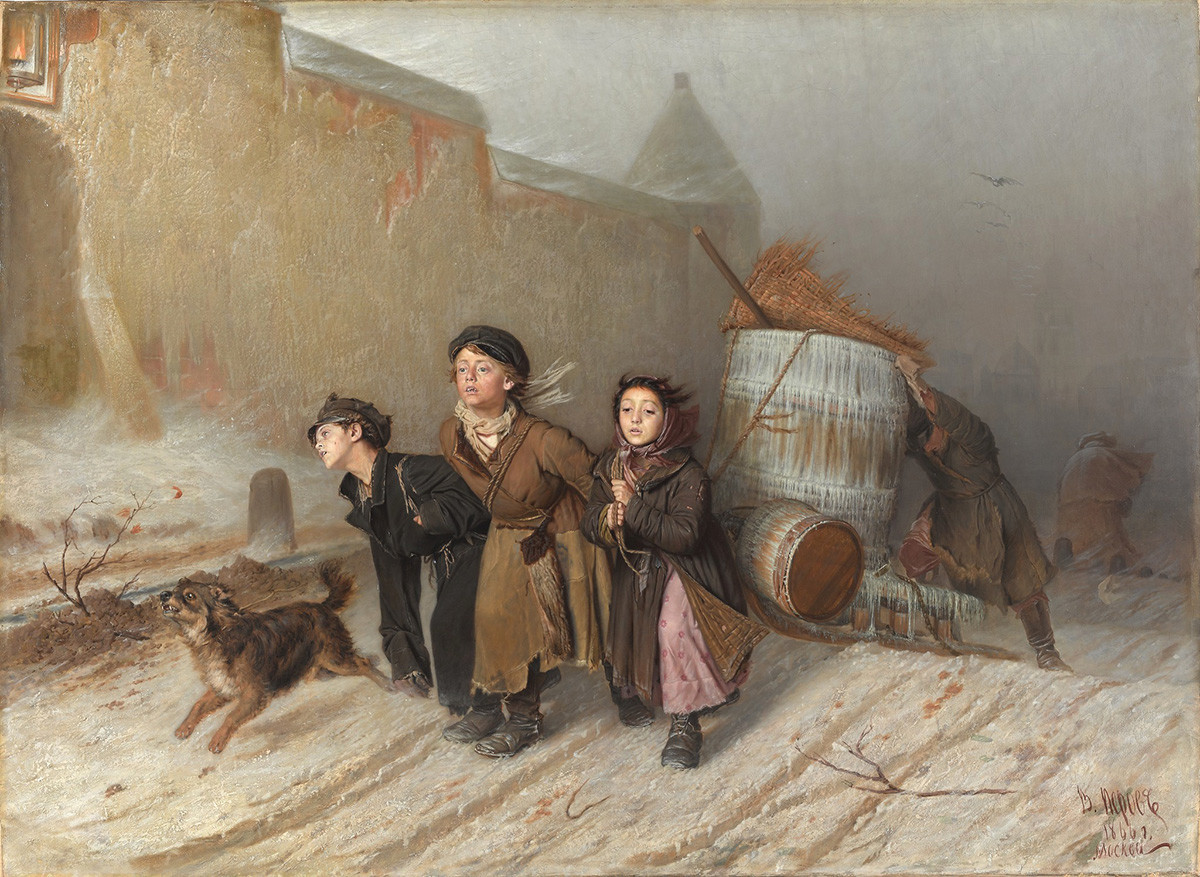
Perov was one of the first to paint canvases on social themes, skillfully broaching acute issues of the day. The depiction of suffering children carrying heavy barrels of water and the general tone of the picture speak of utter hopelessness. Tretyakov bought the painting as soon as the artist laid down his brush.
7. Vasily Vereshchagin. The Apotheosis of War, 1871
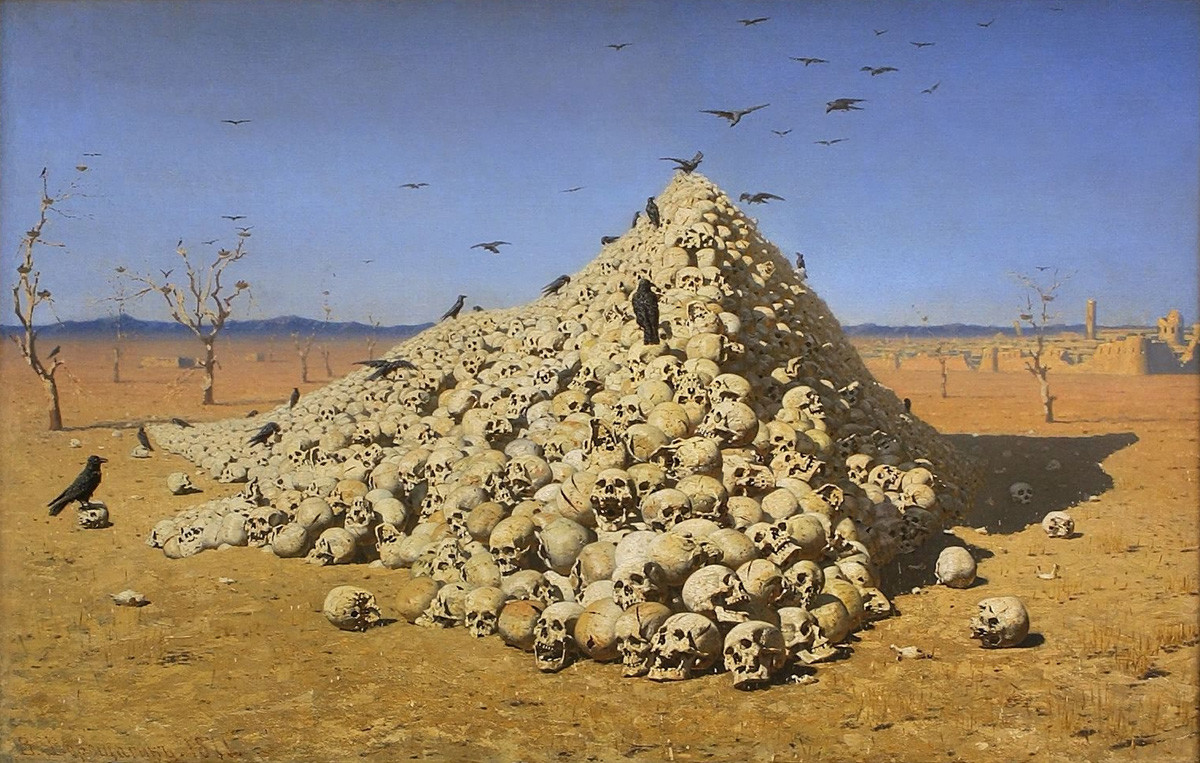
Vereshchagin was a soldier who found fame as a battle painter. He painted this canvas after a trip to Central Asia. The idea for the work was inspired by the legend of the Mongol khan Tamerlane, who left behind such mountains of skulls on the battlefield. The inscription on the frame reads: “Dedicated to all great conquerors — past, present and future.”
8. Alexey Savrasov. The Rooks Have Come Back, 1871
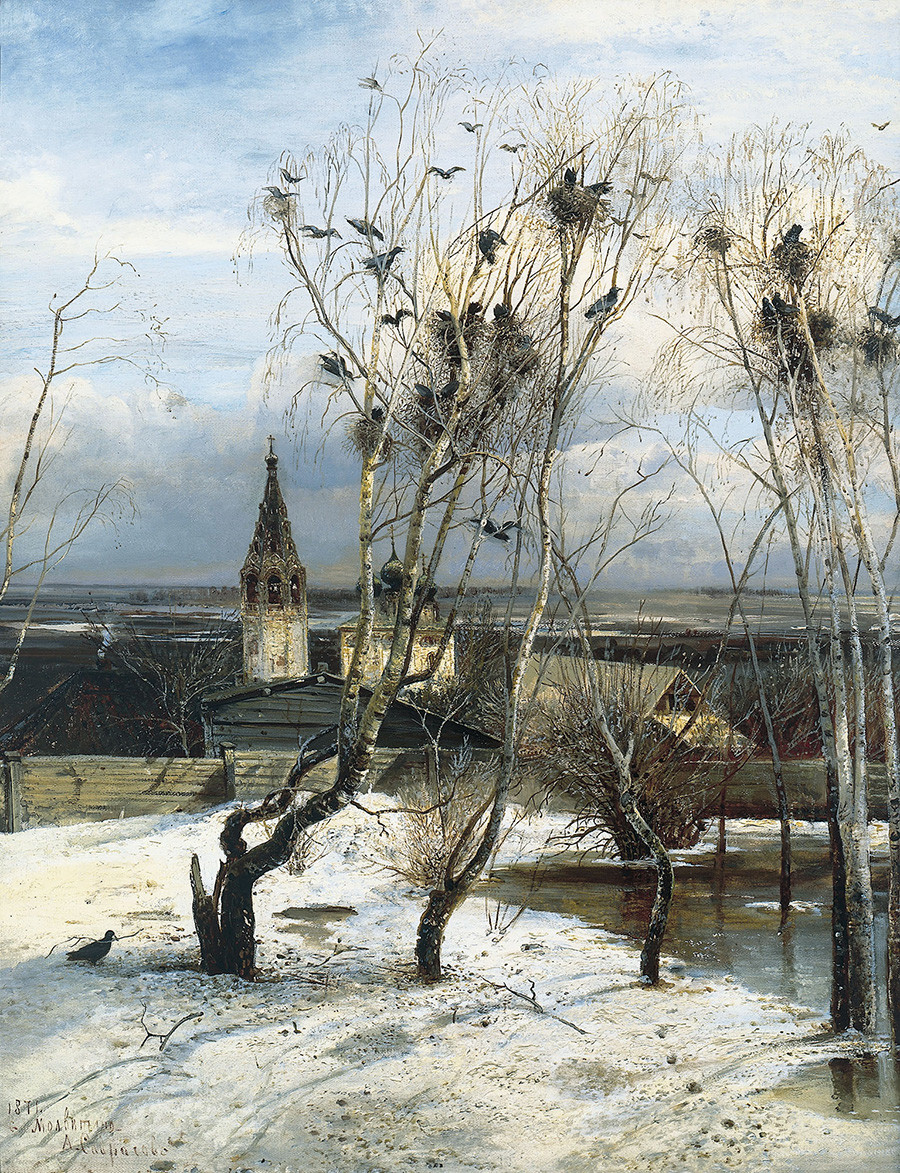
This landscape is considered groundbreaking in Russian art. No one before Savrasov had ever portrayed nature with such realistic “sadness.” Gray birches, spring floods, a small church — contemporaries believed that the artist had painted the very soul of Russia. To buy the painting, Pavel Tretyakov journeyed specially to the city of Yaroslavl, where Saravrasov worked.
9. Arkhip Kuindzhi. Birch Grove, 1879
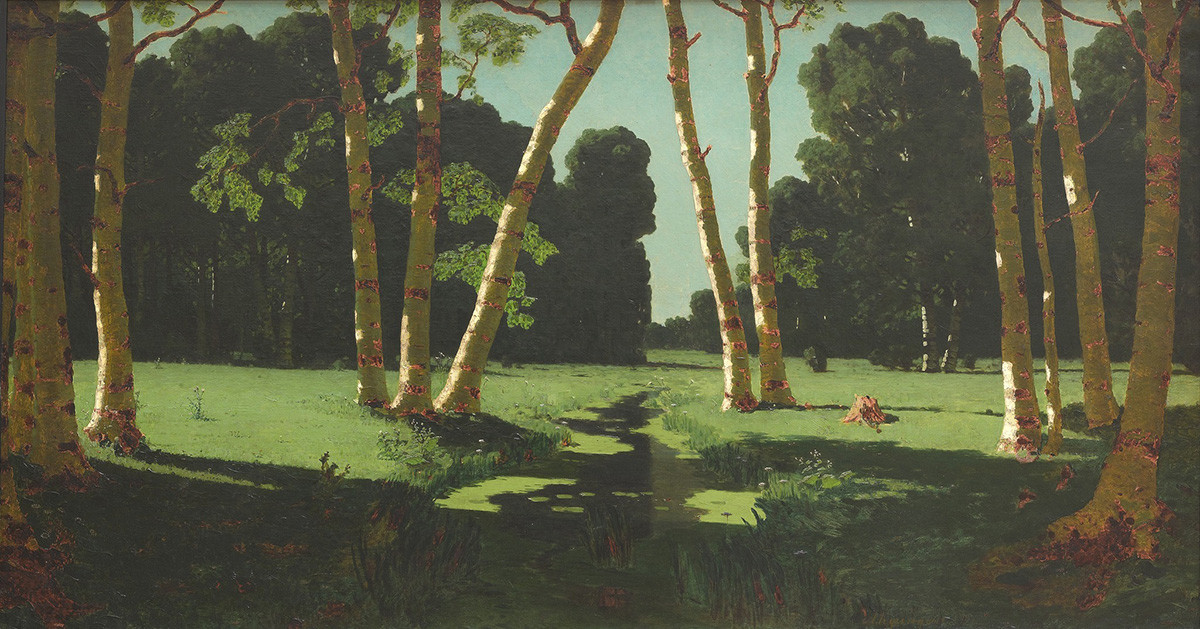
Kuindzhi is regarded as a true master of the use of light. This painting is predominated by green, and in it the artist plays with the contrast of sunspots and shadow depth. The canvas was exhibited at an exhibition of the Itinerant Movement, where Tretyakov snapped it up.
10. Viktor Vasnetsov. Alenushka, 1881
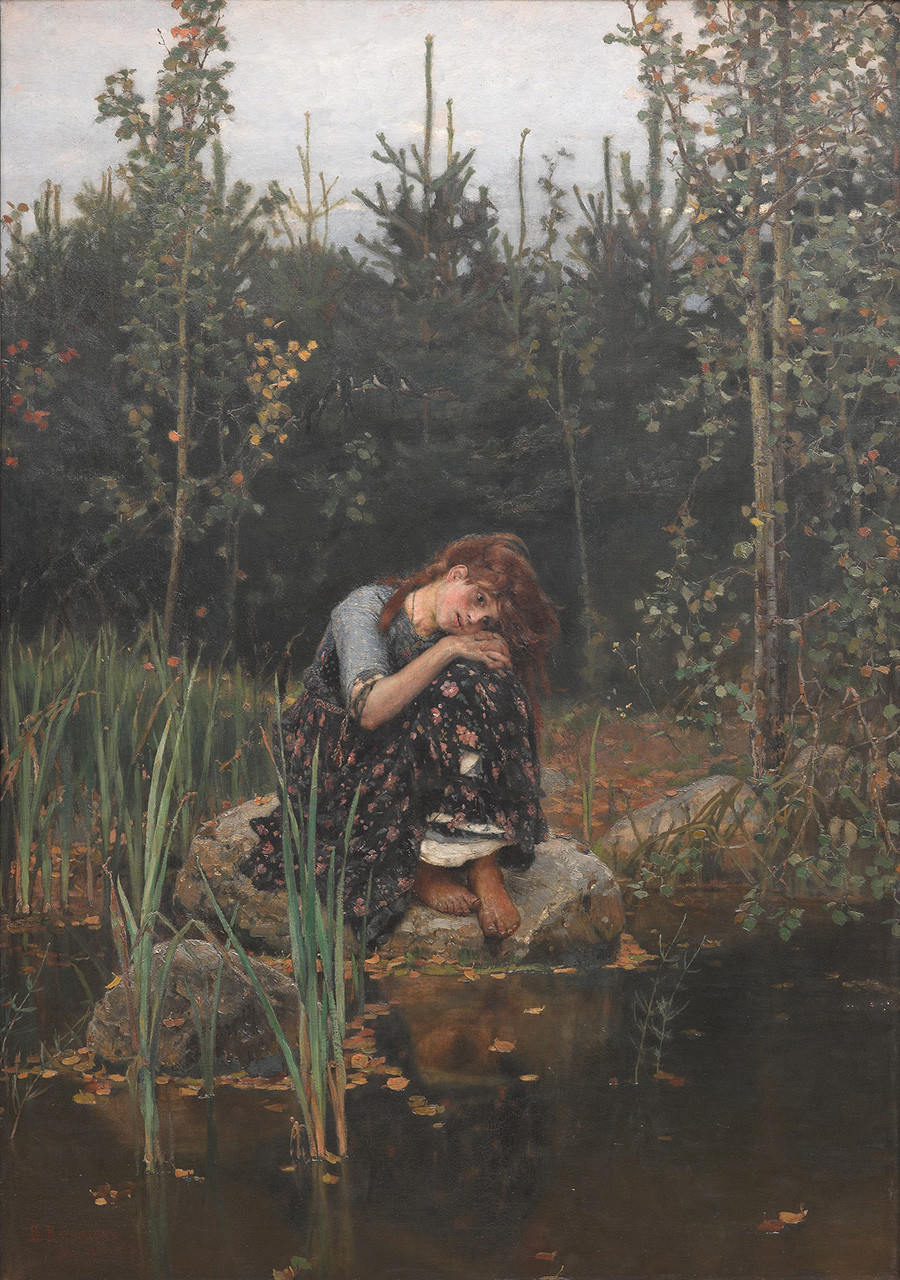
The Tretyakov Gallery houses several works by Russia's main folklore artist, one of the most famous of which is Bogatyrs. Vasnetsov had long nourished the idea of Alenushka when one day, by a pond at the Abramtsevo estate, he chanced upon a simple, bareheaded peasant woman, crystallizing in his mind the subject of the painting, from which, in the artist’s own words, "the special Russian life-breath flowed out."
11. Ivan Kramskoi. Unknown Woman, 1883
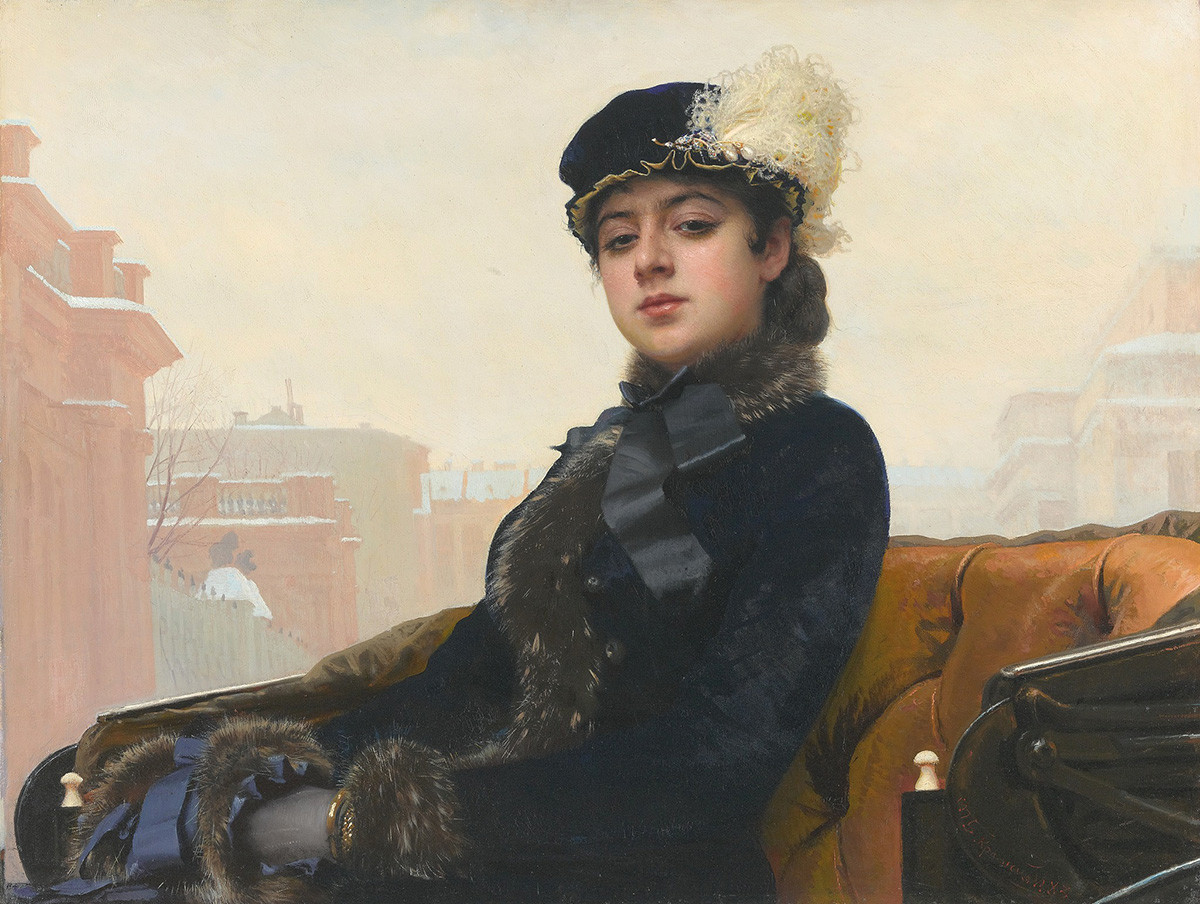
One of the most famous works by Kramskoi depicts a young woman in an open carriage on Nevsky Prospekt in St. Petersburg. Historians still debate who sat as the artist's model.
12. Vasily Surikov. Boyarina Morozova, 1884-87
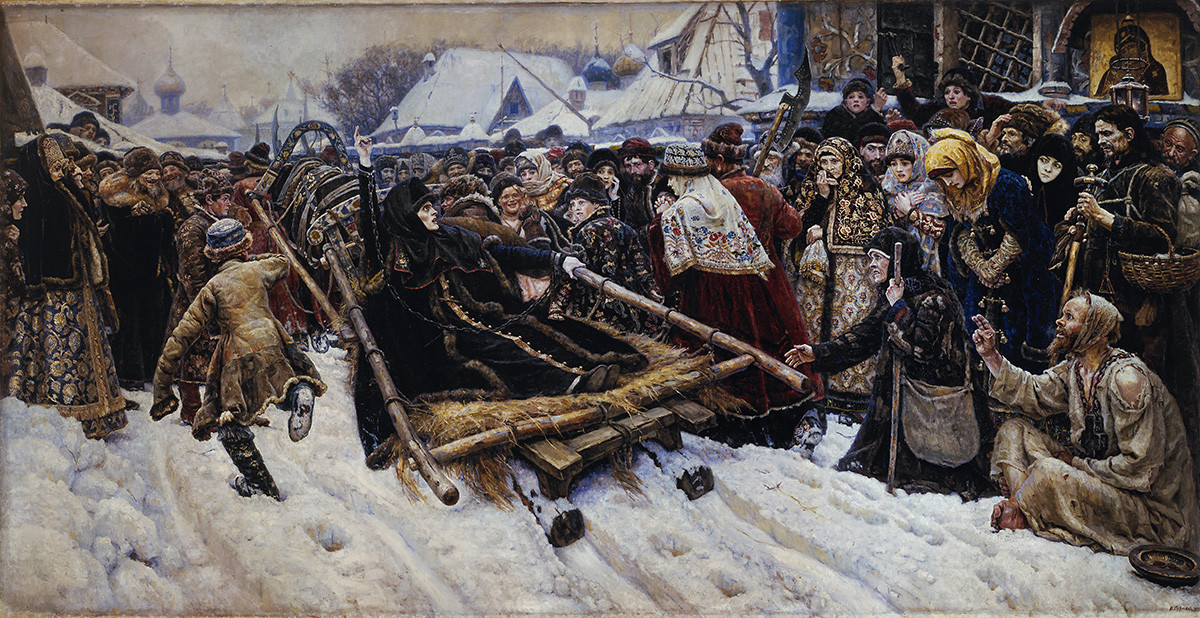
This powerful, multi-figure composition depicts a real historical event: as punishment for refusing to accept the reform of the Russian Orthodox Church, a noblewoman is delivered in shackles to a convent, all the while defiantly showing the Old Believer two-fingered sign of the cross to the crowd. Tretyakov bought the painting at an exhibition; the canvas, measuring 3 x 5.8 meters, occupies a special place in the gallery.
13. Ilya Repin. Ivan the Terrible and His Son Ivan on 16 November 1581, 1885
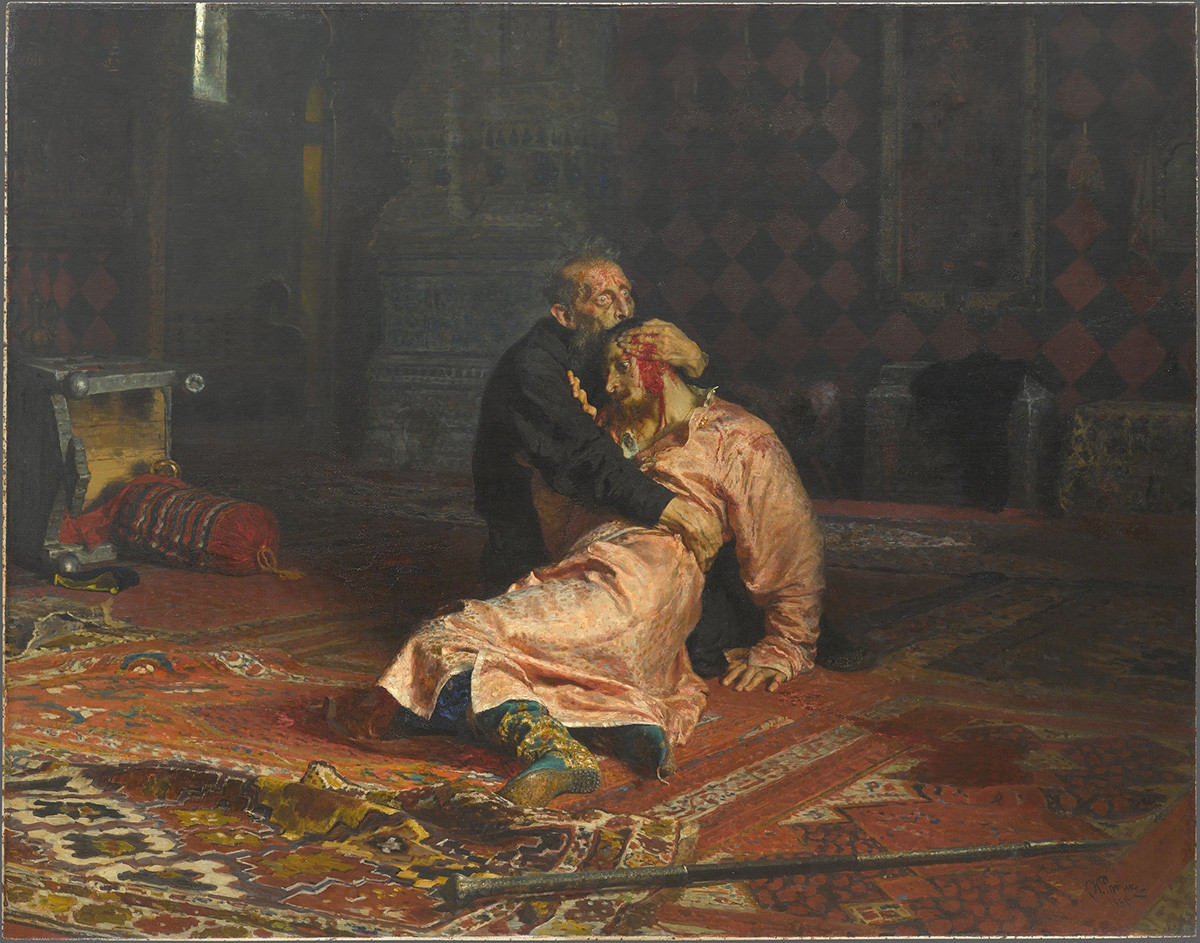
Thanks largely to this painting by Repin, it is believed that Ivan the Terrible did indeed kill his own son in a fit a rage by striking him on the temple with his staff. Alexander III even banned the public display of the frightful picture, but Tretyakov bought it anyway, and later the emperor was persuaded to change his mind.
14. Valentin Serov. Girl with Peaches, 1887
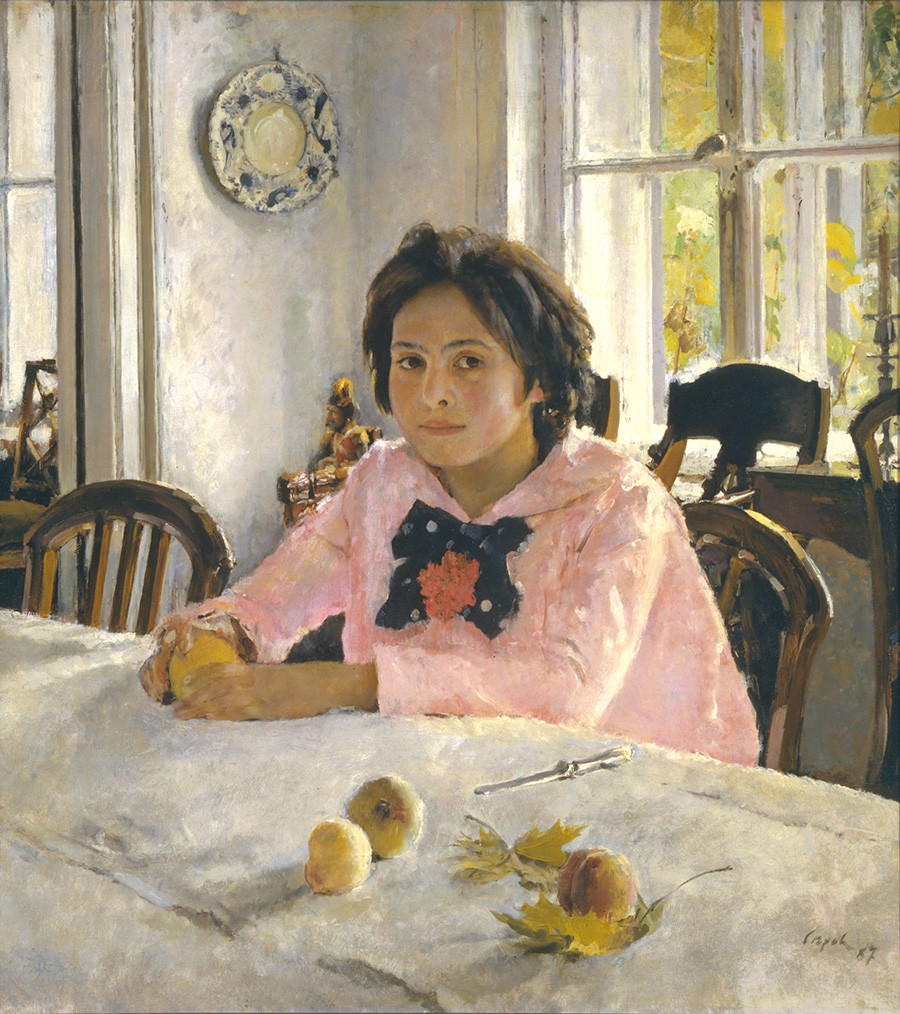
One of Serov's most famous works, painted at Abramtsevo, was of the daughter of his patron, Savva Mamontov. Viewers are captivated by the incredible freshness and carefreeness of childhood with which the picture literally glows. The portrait was bought by the gallery in 1929 from Mamontov's descendants.
15. Ivan Shishkin. Morning in a Pine Forest. 1889
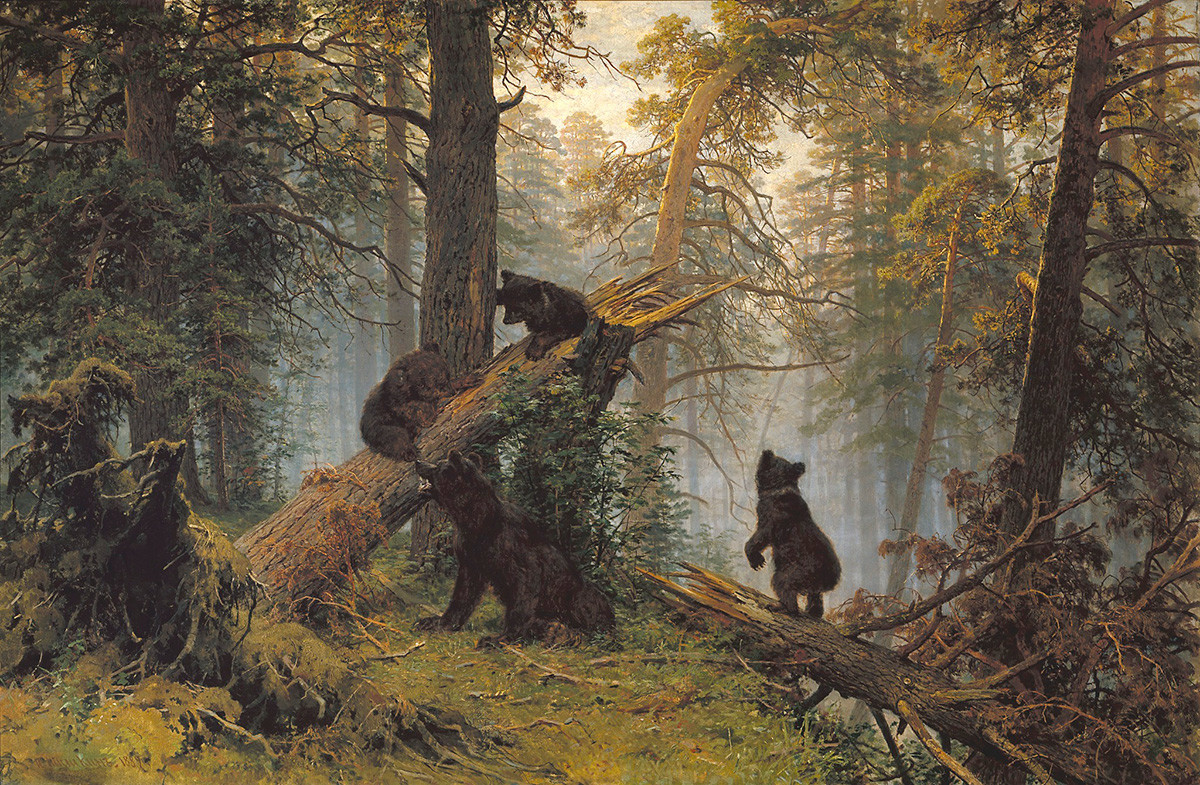
The evergreen coniferous forest is a favorite motif of Shishkin. The bear cubs in the picture were painted by another artist, Konstantin Savitsky, but he later removed his signature from the work and renounced his authorship rights. The subject is familiar to everyone in Russia, because since Soviet times it has appeared on the wrapper of a favorite candy.
16. Mikhail Nesterov. The Vision to the Youth Bartholomew, 1890

The painting depicts a very important subject in the history of the Church, and opens the artist’s cycle of works about the life of St. Sergius of Radonezh. Bartholomew, the saint’s secular name, was an illiterate boy until a chance meeting with a monk who filled him with wisdom... Nesterov considered the painting to be the pinnacle of his art. Tretyakov bought it at an exhibition by the Itinerants.
17. Mikhail Vrubel. The Demon Seated, 1890
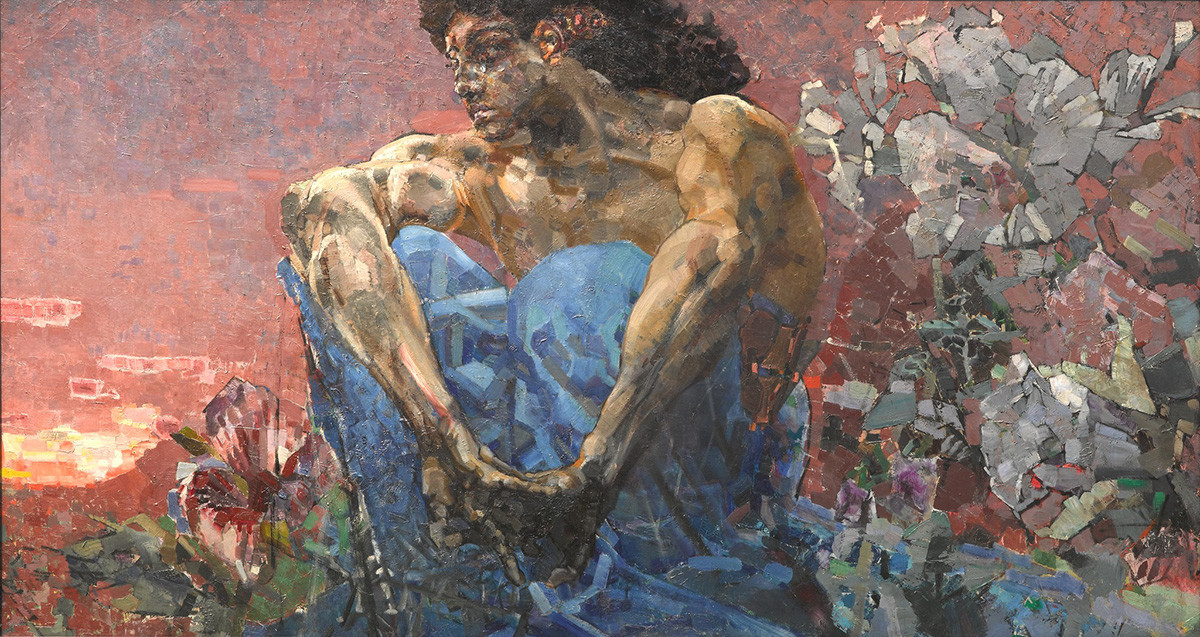
An entire room is dedicated to this artist, one of the Tretyakov Gallery’s most mystical. This is just one of many Vrubel demons, and a masterpiece of Russian symbolism. The painting embodies the eternal struggle of a rebellious spirit: the beautiful, powerful demon gazes mournfully at the world around, which is changing, as if refracted by crystals. Post-revolution, the painting was moved to the Tretyakov Gallery from a private collection.
18. Isaac Levitan. Over Eternal Peace, 1894
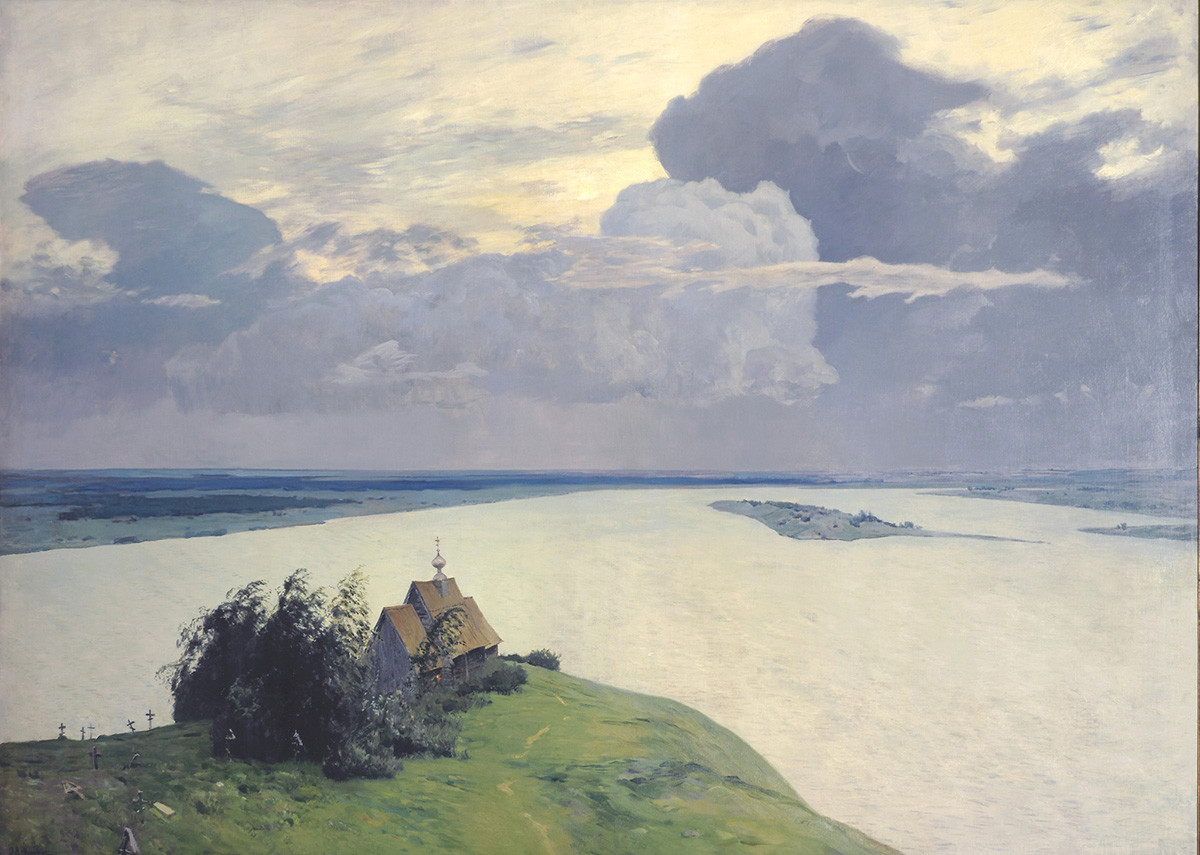
A disciple of Savrasov and the author of The Rooks Have Come Back, Levitan adopted and perfected the latter's vision of the Russian landscape, melancholic and soul-stirring. It is considered one of the most "Russian" paintings ever created.
19. Natalia Goncharova. Self-Portrait with Yellow Lilies, 1907
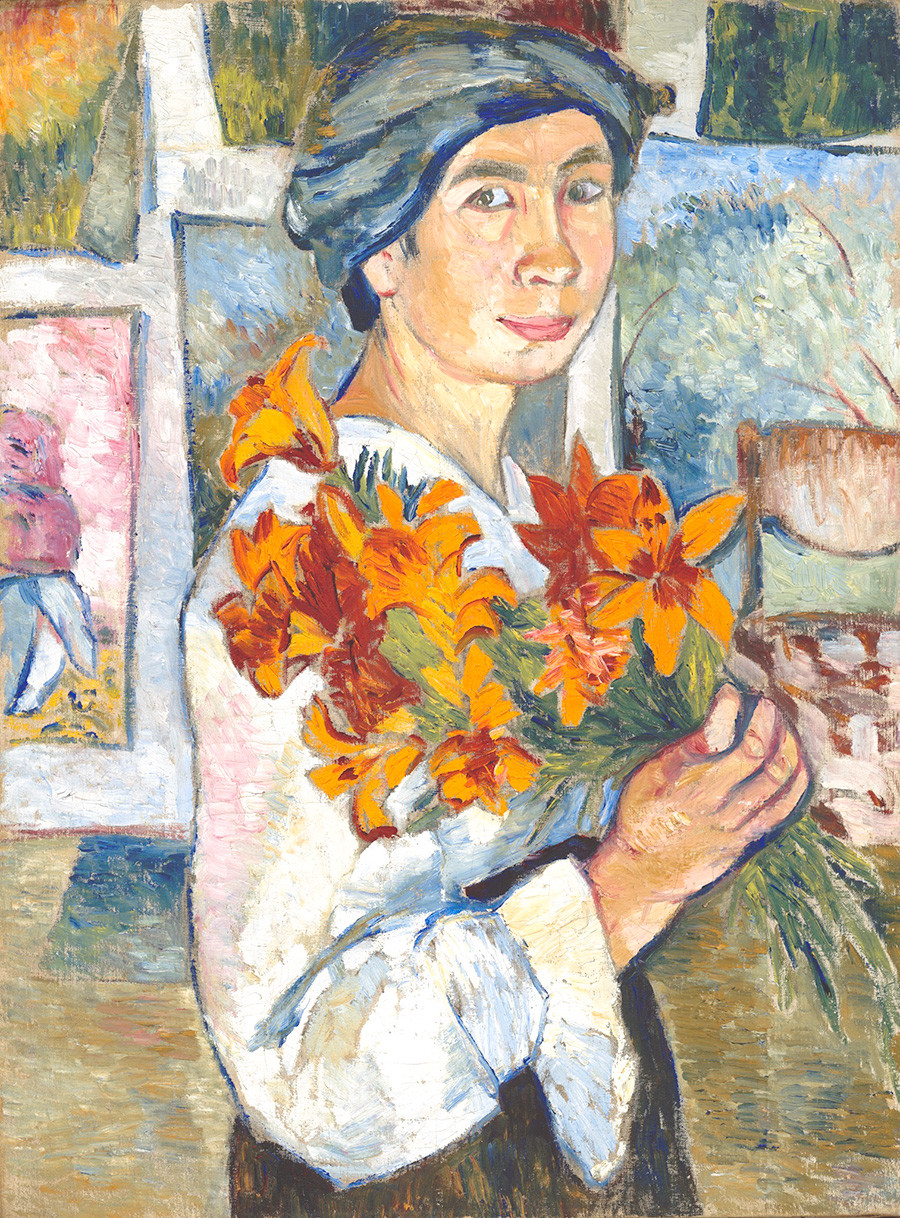
The High Priestess of the Russian avant-garde, together with her husband Mikhail Larionov, was a member of various progressive art societies, and took part in many modernist exhibitions in both Russia and Europe. This self-portrait reflects Goncharova's fascination with Expressionism.
20. Zinaida Serebryakova. At the Dressing-Table. Self-Portrait. 1909

Serebryakova produced paintings filled with tenderness: girls, peasant women, idyllic landscapes, family members. Contemporaries were full of praise for this self-portrait in the mirror, calling it a fresh, sweet and highly artistic work.
21. Kuzma Petrov-Vodkin. Bathing the Red Horse. 1912
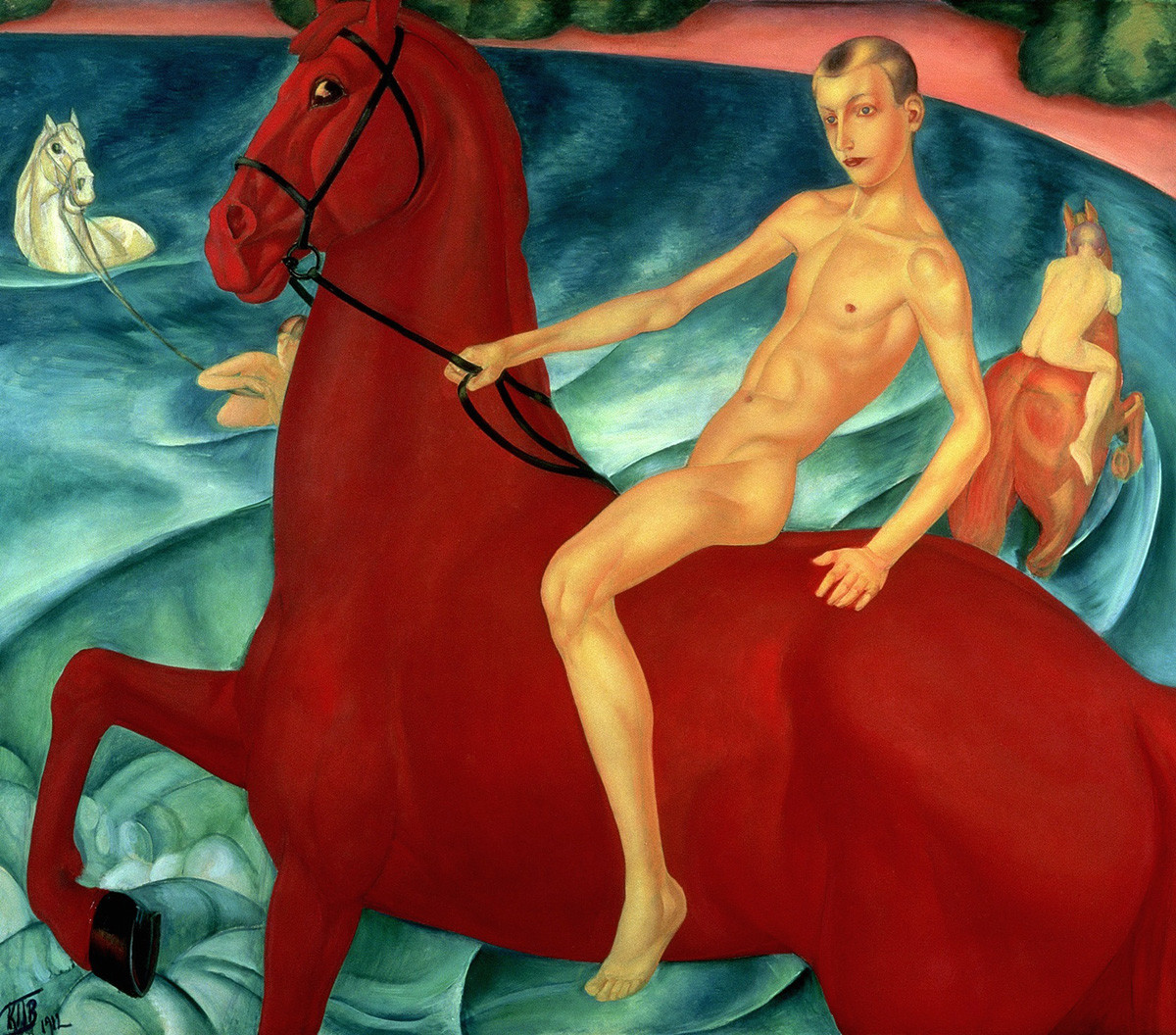
Petrov-Vodkin’s art reimagined Russian icon painting. Contemporaries interpreted the picture in different ways, but at the dawn of the Revolution, it was believed that the red horse symbolized the path of the new Russia. The canvas was located in Sweden for a long time, coming to the Tretyakov Gallery from private hands only in 1961.
22. Wassily Kandinsky. Composition VII, 1913
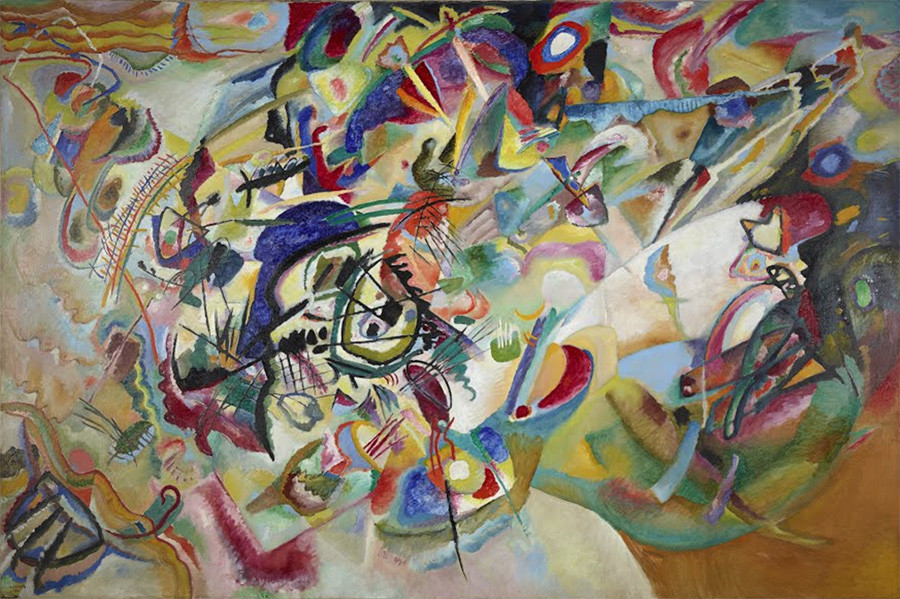
Russia’s most prominent abstractionist lived and worked for many years in Germany. He was one of the first artists to reject figurativeness and focus on color: “Color is a power which directly influences the soul.” Art critics consider this composition to be the pinnacle of Kandinsky's work, finding in it a combination of biblical themes: the Resurrection, Judgment Day, the Flood and the Garden of Eden.
23. Kazimir Malevich. Black Square, 1915
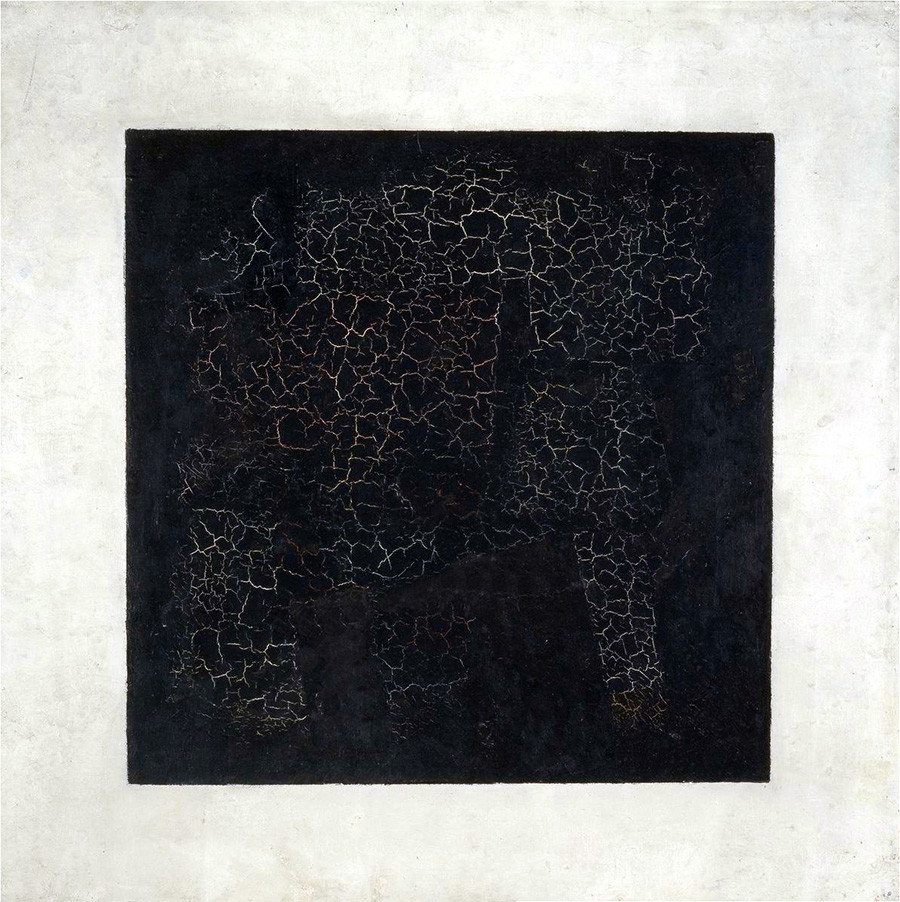
The most famous and controversial picture of the Russian avant-garde caused a major stir at The Last Futurist Exhibition of Paintings 0.10, where it was first shown. It was hung in the “red corner,” the place in the home usually reserved for icons. X-ray scans in 2015 revealed the presence of several more layers under the final image, and initially the work resembled a cubo-futuristic composition. But during his deep reflections on form and color in painting, the artist conceived the idea of “Supremus” — the dominance of color. Malevich went on to make several more versions of the painting, including one specially for the Tretyakov Gallery, because the original was covered with small cracks.
Read more: Hidden signs of Malevich's 'Black Square'
24. Boris Kustodiev. The Bolshevik, 1920
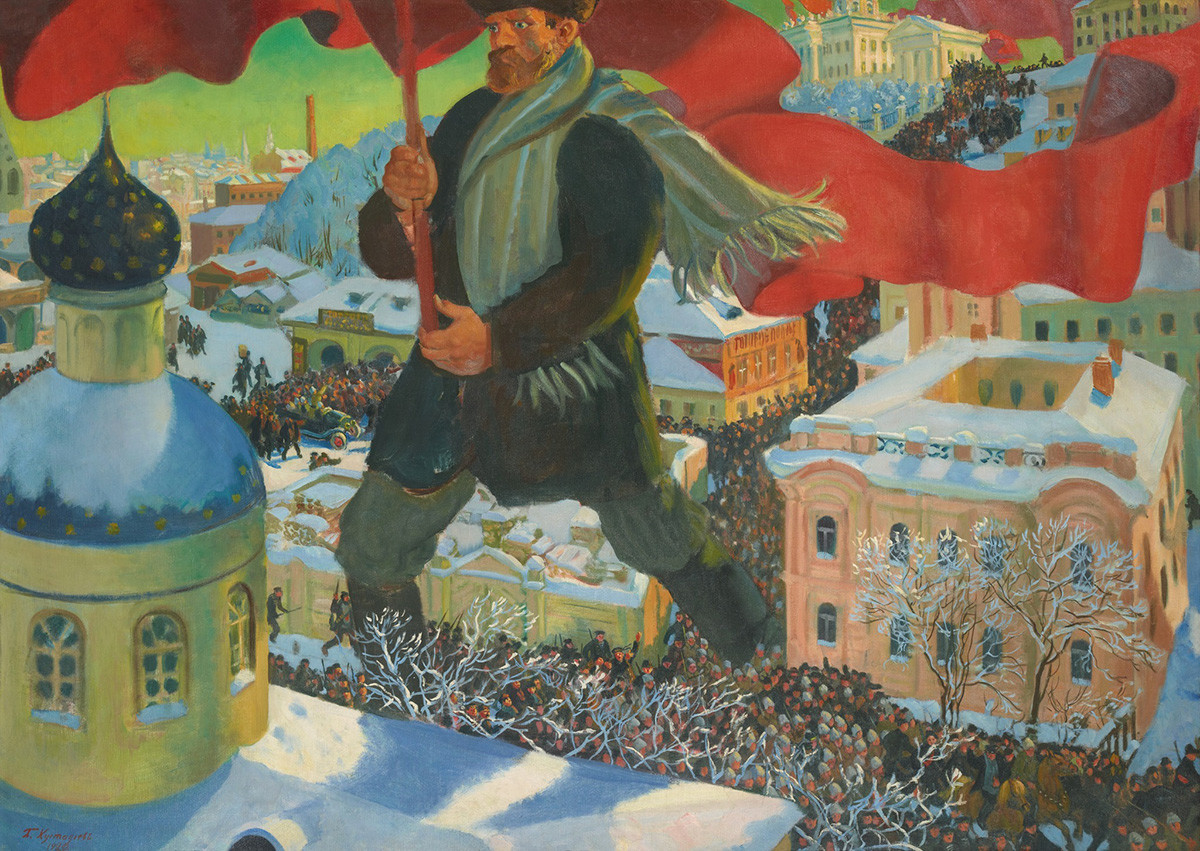
Kustodiev is primarily known for his scenes of Russian merchant and village life, painted in bright hues, the focus firmly on ancient towns, churches and folk festivities. One of the artist’s later works, The Bolshevik reflects his impressions of the 1917 Revolution, which he observed from the window of his home, confined to a wheelchair.
25. Alexander Deyneka. Future Pilots, 1938
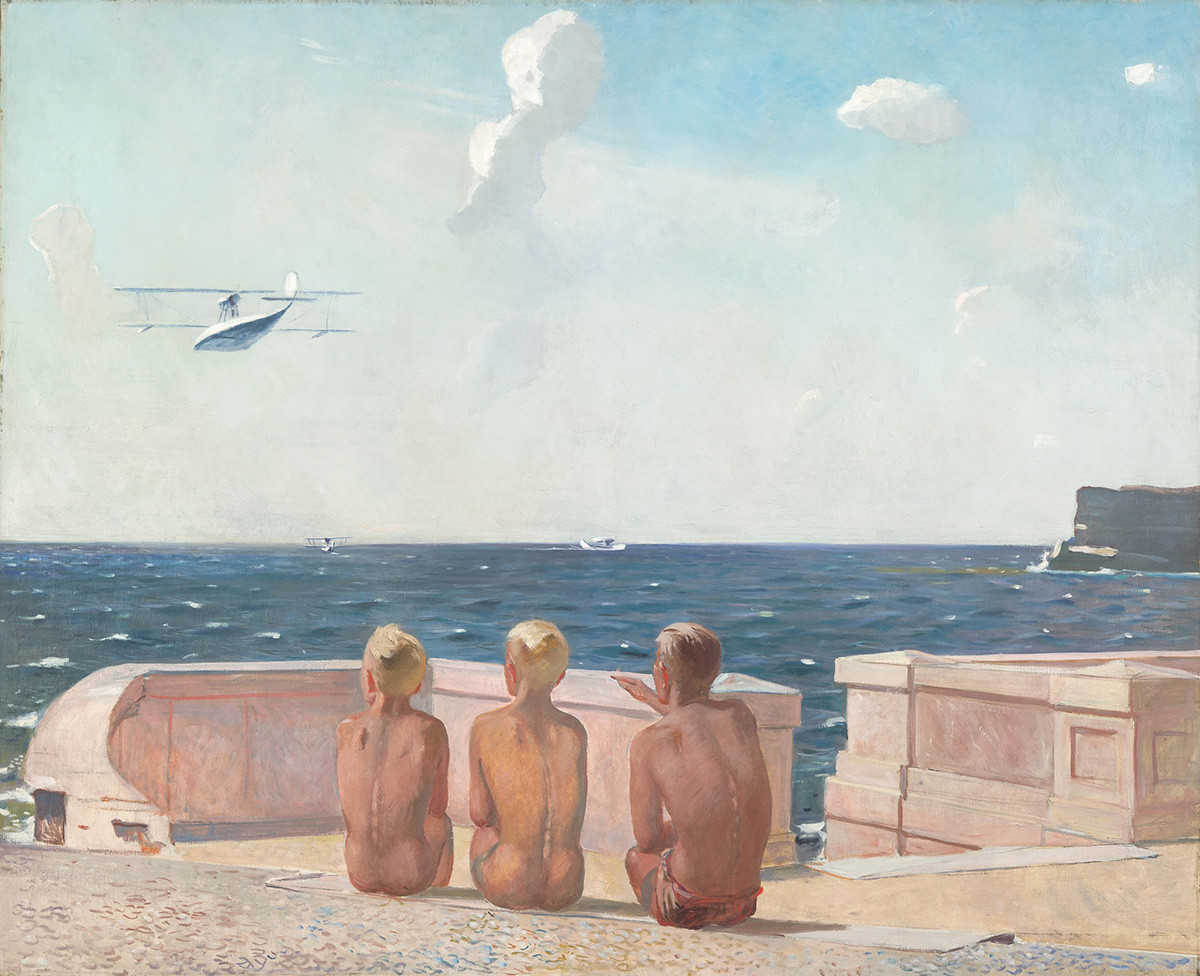
Alexander Deyneka is one of the most famous Soviet artists, the creator of numerous propaganda pieces in a distinctly poster style. His Future Pilots is one of the most emblematic works of the official Soviet art style, known as socialist realism.
If using any of Russia Beyond's content, partly or in full, always provide an active hyperlink to the original material.
Subscribe
to our newsletter!
Get the week's best stories straight to your inbox